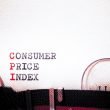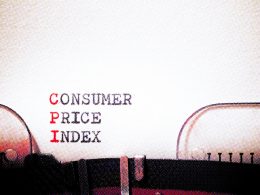As summer gives way to fall, uncertainty is once again the main theme investors can’t ignore. Trade fights, questions about central bank independence, and political turbulence are all colliding, making this one of the most unsettled backdrops in years. Against that, BMO Global Asset Management’s leadership team—Chief Investment Officer Sadiq Adatia, Investment Strategist Brittany Baumann, Portfolio Manager Steven Shepherd, and Head of Multi-Asset Solutions Marchello Holditch—share how they’re sizing up both bullish and bearish forces1, and what it means for portfolios heading into year-end.
Navigating a World of Unknowns
Sadiq Adatia sets the tone by stressing the need for caution:
“From the fate of Donald Trump’s tariffs—which looks likely to be decided by the U.S. Supreme Court—to the independence of the U.S. Federal Reserve (Fed), rarely have so many foundational issues been up in the air at once. In that kind of environment, investors must be cautious in how they’re managing their portfolios, and incorporating some protection becomes even more important.”
Despite the fog, U.S. fundamentals are holding up—earnings are solid, inflation is tame, and unemployment should top out near 4.5%. Still, Adatia warns, protection isn’t optional anymore:
“The sheer number of unknowns means portfolio protection in the form of hedges and an allocation to Gold are even more crucial now than it was at the beginning of the year. It’s a matter of discretion: the water looks inviting, but we want to make sure we have our life vest secure before we dive in.”
U.S. Growth Surprises, Canada Lags
Brittany Baumann highlights America’s surprising resilience. Consumer and business spending have stayed strong, and artificial intelligence is adding unexpected fuel:
“Software and IT investment contributed over two percentage points to Gross Domestic Product (GDP) growth in the first half of the year, for example. At the same time, AI adoption could already be impacting labour demand, particularly entry level jobs.”
She argues consensus forecasts are still too pessimistic, and with the Fed leaning toward “insurance cuts,” growth could surprise to the upside.
Canada, though, is a different story:
“Growth has not been as resilient compared to the U.S., with expansion of 0.2% in the first half compared to 1.4% south of the border. Third-quarter GDP is also stalling out compared to something closer to 2% in the U.S. Although tariffs are still relatively lower than other countries thanks to the United States-Mexico-Canada Agreement (USMCA) exemptions—roughly below 10% versus the 15-to-20% faced by other major trading partners—Canada has yet to reach a definitive deal over final duty rates.”
Baumann adds that job growth has been negative for six months, even if energy exports and U.S. demand remain safety nets.
Equities Still Have Room, Despite Valuation Anxiety
On equities, Steven Shepherd pushes back on fears that valuations are stretched:
“When looking at Equities as being expensive, the first question you have to ask is, ‘which equities’? The S&P 500 Index is trading at about 24 times price-to-earnings (P/E) viewed by market capitalization, which is actually off the peak (27x) seen at the beginning of the year. On an equal-weight basis, U.S. Equities are trading at 19x P/E compared to 21x earlier this year. In our view, there’s still room to run for now, particularly with rate cuts on the horizon.”
He notes U.S. strength has come from earnings growth, not just multiple expansion, unlike Europe where optimism hasn’t translated into actual results.
Shepherd also calls out the renewed power of the AI trade:
“We prefer to go with what’s working, and that’s U.S. Equities as an overweight, and therein, Growth as an overweight, moving back to slightly bullish (+1) on the recognition that this market is becoming narrower in its leadership in recent weeks than it was a couple of months ago, with the AI trade back in full swing.”
He cautions that picking the right tech names is vital, invoking the Nokia-Apple story as a reminder that not every first mover wins.
Bonds: Neutral but Wary of Policy Risks
Marchello Holditch turns the focus to bonds, warning that politics is clouding the outlook:
“The U.S. President’s meddling is lowering short-term borrowing costs as the market puts a higher probability on a more dovish Fed chair, as well as a more dovish makeup generally of the Board of Governors. This path could provide, in theory, a short-term economic boost, but it’s also leading to a rise in inflation expectations and term premia, which is a fancy way of saying keeping long-term rates pinned up which could ultimately lead to sharply higher rates down the road.”
That, he explains, is why BMO GAM sits neutral on global duration and leans on Gold as a hedge.
Closer to home, Holditch expects the Bank of Canada to cut further if inflation stays contained, though long-term Canadian yields will largely follow the U.S.
Gold’s Growing Role as a Hedge
Gold is a common thread throughout the conversation. Steven Shepherd sums up why:
“Gold has been upgraded back to slightly bullish (+1) as the global market expresses concerns over longer-term U.S. fiscal policy and overall heightened volatility and policy risk. A risk hedge like Gold has become increasingly attractive.”
At roughly US$3,500/oz, Gold has established a strong technical floor and is now central to BMO GAM’s protection strategy, alongside option overlays.
The Bottom Line
The message from BMO GAM’s House View is clear: stay invested in growth, especially in the U.S., but protect yourself. AI and earnings are powering equities, Canada is struggling to keep pace, and political risks are skewing fixed income. Gold stands out as the go-to hedge.
Or, as Sadiq Adatia puts it:
“The water looks inviting, but we want to make sure we have our life vest secure before we dive in.”
Footnote:
1 BMO Global Asset Management. "Bulls vs. bears: How we weigh opposing signals." 15 Sept. 2025.















